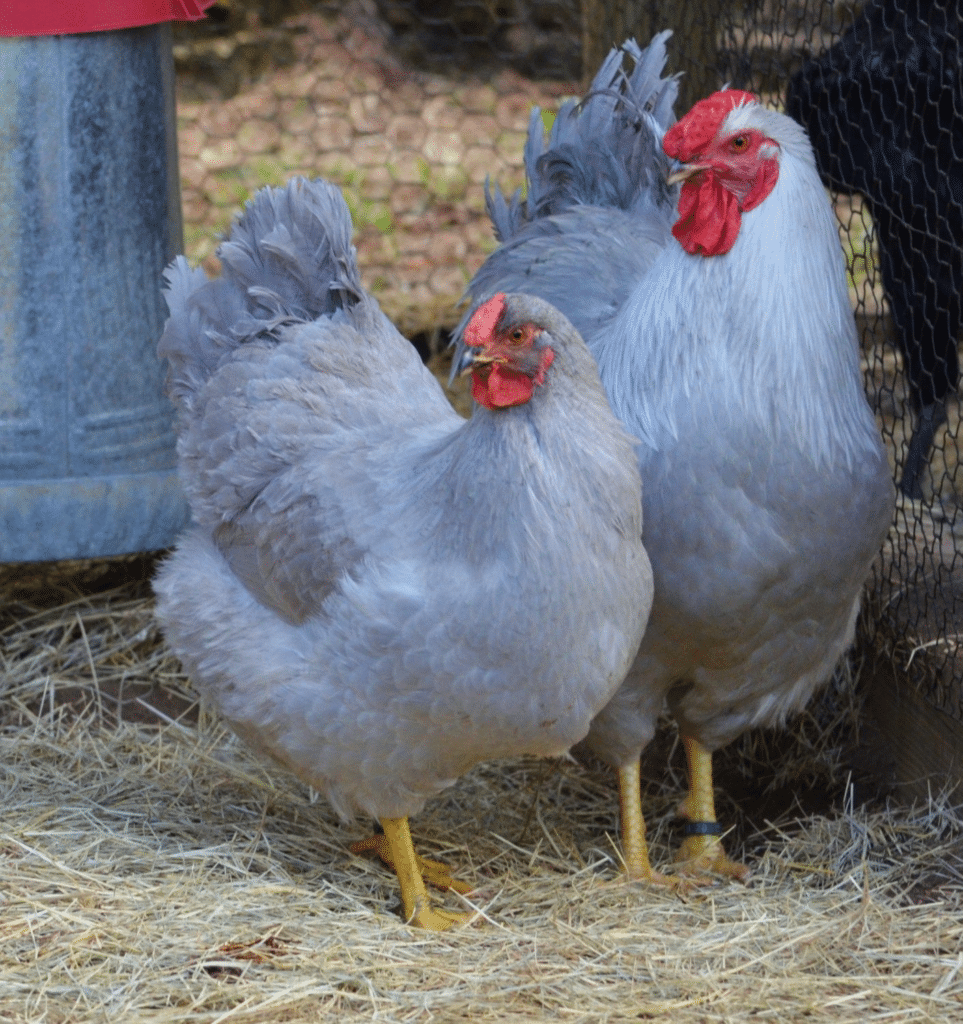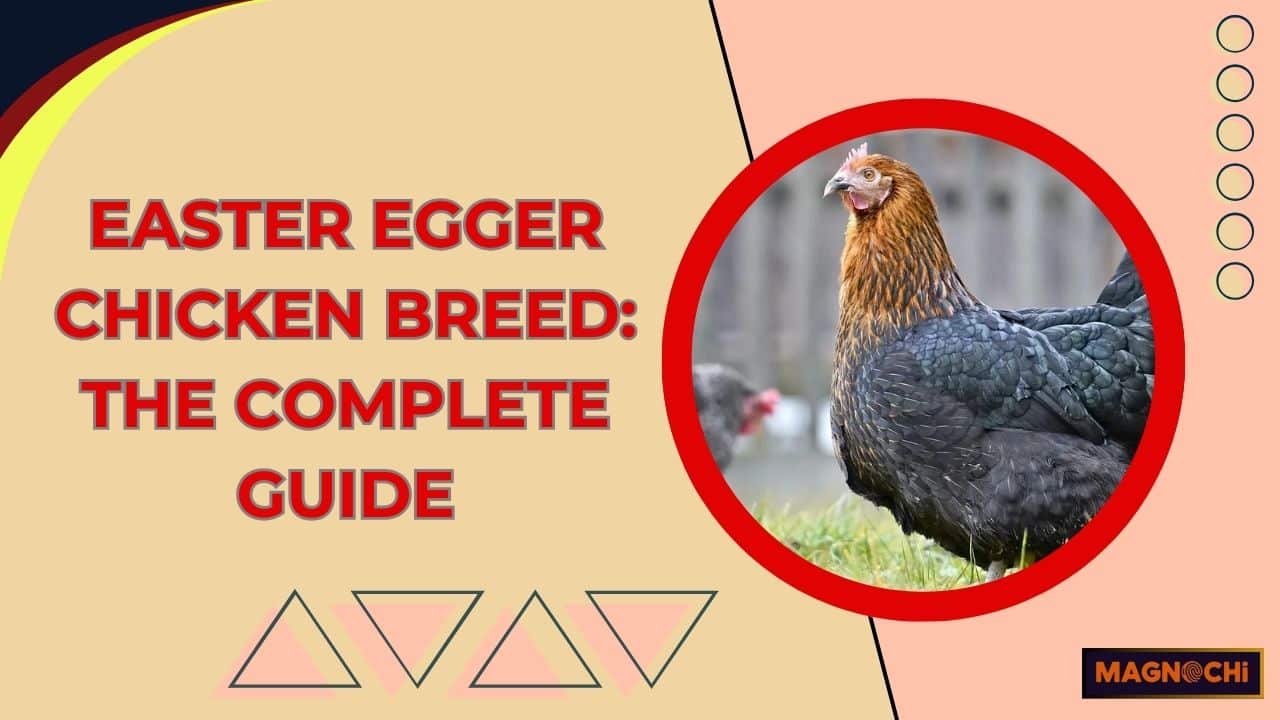Easter Egger Chicken Breed: Easter Egger chickens are one of the most beloved and diverse breeds in the backyard poultry world.
Whether you’re a seasoned chicken keeper or just starting out, these chickens offer both beauty and practicality.
Known for their colorful eggs and friendly nature, Easter Eggers are perfect for those who want a little bit of everything in their flock.
In this ultimate guide, we will dive into all the essential details about Easter Egger chickens, from their origins and physical traits to their egg production and care requirements.
By the end of this article, you’ll know everything you need to make an informed decision about adding Easter Eggers to your homestead or urban farm.
Easter Egger Chicken History: Unraveling the Origins
Easter Egger chickens are often mistaken for purebred varieties, but they are actually a hybrid breed.
Their origins are tied to the Ameraucana and Araucana chickens, both of which are famous for their blue egg-laying abilities.
The Easter Egger was developed as a cross between these breeds and others, making it a hybrid with a variety of characteristics, including unique egg colors and diverse physical traits.
The Ameraucana and Araucana Connection
- Ameraucana: Originating in Pennsylvania in the 1970s, Ameraucanas were selectively bred for their blue eggs and distinctive pea combs. Their feather color ranges from blue to black, and they are known for being friendly and hardy.
- Araucana: This breed hails from Northern Chile and was first recognized in the 1930s. Araucanas are famous for their blue eggs and unique “rumpless” trait, meaning they lack a tail. They are also known for being more independent and less friendly compared to other breeds.
Easter Eggers are a result of mixing these two breeds, creating a hybrid that inherits some of the best traits from both parents.
While they may not meet the strict criteria of the American Poultry Association (APA) for official recognition as a breed, Easter Eggers have gained popularity for their colorful eggs and friendly dispositions.

Meet the Parents: The Ameraucana and Araucana Influence
When we look at the Easter Egger, we can see the influence of both the Ameraucana and the Araucana.
The genetics from these parent breeds contribute to the Easter Egger’s wide range of appearances and egg colors.
- Ameraucana Traits: Easter Eggers often inherit the pea comb, red or white ear coloring, and small red wattles from the Ameraucana. These features make Easter Eggers stand out in any flock.
- Araucana Traits: From the Araucana, Easter Eggers inherit the ability to lay blue eggs. However, not all Easter Eggers have the rumpless trait, as this characteristic is only present in specific lines of Araucanas.
The result is a chicken that may have varying physical traits but always brings beauty and unique egg colors to the table.
Are Easter Egger Chickens Heritage or Hybrid?
Unlike heritage breeds like the Plymouth Rock or Legbar, Easter Eggers are considered a hybrid breed.
This means they are the result of crossing different breeds for specific characteristics, such as colorful eggs or docile temperament.
Heritage breeds, on the other hand, are more traditional breeds that have been naturally bred for generations.
Easter Eggers can be bred with other chickens, which results in offspring with unpredictable traits, especially when it comes to egg color.
This is one reason why they are categorized as hybrids rather than purebreds.
Despite this, Easter Eggers are prized for their hybrid vigor, which often results in hardier, healthier chickens.

Easter Egger Chicken Appearance: The Colorful and Unique Look
One of the main attractions of Easter Eggers is their appearance.
These chickens are not just functional they are also visually stunning.
The Easter Egger’s feathers can come in a variety of colors and patterns, making them a true standout in any flock.
Common colors include:
- Black
- Blue
- Gold
- Silver
- Red
Easter Eggers often have a feather mohawk on top of their heads, adding to their unique look.
They can also have pea combs, a characteristic inherited from the Ameraucana parent breed, which is a smaller, more compact comb.
Key Physical Features of the Easter Egger:
- Pea comb: A small, three-pronged comb that is a signature trait of the Ameraucana.
- Red or white ear coloring: A defining feature that varies from chicken to chicken.
- Small red wattles: Another feature that adds to their unique facial appearance.
- Bare legs: Unlike some breeds that have feathers on their legs, Easter Eggers typically have bare legs.
- Four toes: Easter Eggers have the standard four toes, like most chickens.
How Much Do Easter Egger Chickens Weigh?
While Easter Eggers are generally not considered heavyweights, they are a moderate-sized chicken.
The typical weight for Easter Eggers is as follows:
- Roosters: 5 lbs (2.3 kg)
- Hens: 4 lbs (1.8 kg)
Their medium size makes them adaptable to both small and large coops.
They’re not so large that they need excessive space but large enough to be productive egg layers.

Average Lifespan of Easter Egger Chickens
Easter Eggers have a relatively long lifespan compared to some other hybrid breeds.
With proper care, you can expect your Easter Egger chickens to live anywhere from 5 to 8 years.
However, egg production typically decreases as they age, so while they remain lovely pets for many years, their egg-laying capacity will dwindle after their peak years.
Factors Influencing Lifespan:
- Diet: Proper nutrition, including calcium and vitamins in their water, helps promote longevity.
- Healthcare: Regular checks for parasites, disease resistance, and other health risks will keep your chickens in top shape.
- Environment: A comfortable and safe coop will ensure they stay healthy for longer.
Easter Egger Egg Color: What to Expect
One of the most exciting aspects of raising Easter Eggers is their colorful eggs. These chickens are well-known for their ability to lay eggs in a variety of hues, including:
- Blue
- Green
- Pink
- Brown
The egg color depends largely on genetics. An Easter Egger that carries a gene from the Ameraucana or Araucana will likely produce blue or green eggs.
However, some may lay eggs that appear more of a light brown or pinkish hue.
These colorful eggs make Easter Eggers a favorite among backyard poultry keepers.
How Many Eggs Do Easter Egger Chickens Lay?
Easter Eggers are excellent egg layers, producing an impressive amount of eggs per year. On average, Easter Egger hens lay about 200+ eggs per year.
This can vary depending on age, health, and environment, but their consistent egg production makes them a practical choice for those looking to keep a reliable source of eggs.
Egg Production Tips:
- Age and egg production: Egg production tends to decline after the first 2-3 years.
- Calcium: Ensure they have access to oyster shells to strengthen their eggshells and improve egg production.
Breeding Easter Egger Chickens: Tips and Considerations
Breeding Easter Eggers can be a fun and rewarding process, but it’s important to note that because they are a hybrid breed, breeding them may result in offspring that don’t always look the same or produce the same colored eggs.
If you want consistent traits, it’s best to breed them to other Easter Eggers or back to one of their parent breeds, like the Ameraucana.
Breeding Considerations:
- Hybrid offspring unpredictability: The characteristics of Easter Eggers can vary widely, so their offspring may not always exhibit the same egg color or temperament.
- Purebred breeding: For more consistent results, breed Easter Eggers back to Ameraucanas or Araucanas.

Are Easter Egger Hens Broody?
Easter Egger hens can occasionally become broody, but they are not as notorious for this trait as some other breeds.
Broody hens tend to sit on eggs for extended periods, often at the expense of egg production.
However, Easter Egger hens make excellent mothers when they do go broody, and they will carefully incubate their eggs until they hatch.
Are Easter Egger Chickens Hardy?
Easter Eggers are relatively hardy chickens that can adapt well to a variety of climates.
They are not as cold-hardy as breeds like the Plymouth Rock, but with proper care, they can thrive in colder regions.
In hot climates, ensure they have access to plenty of shade and water.
Tips for Hardiness:
- Shade and water in hot weather to prevent heat stress.
- Heater or brooder for cold weather to help them stay warm during the winter months.
- Draft-free coop: Make sure your coop is enclosed and draft-free during colder months.
Common Easter Egger Health Risks
While Easter Eggers are generally healthy, like all chicken breeds, they are prone to certain health risks, such as:
- Calcium deficiency: This can lead to soft eggshells and other health issues. Providing oyster shells helps prevent this.
- Parasites: Keep an eye out for common poultry parasites like lice and mites.
- General illnesses: Regular health checks are essential to catch issues like respiratory diseases early.

Are Easter Egger Chickens Good for Meat Production?
While Easter Eggers are primarily known for their egg-laying abilities, they can also be used for meat production.
However, their meat is more similar to that of quail small and lean.
They are not the best choice if you are looking for chickens specifically raised for meat, as their size doesn’t lend itself to large meat yields.
Are Easter Egger Chickens Noisy?
If you’re looking for quiet chickens, Easter Eggers may be a great option.
Their hens are generally quiet, making them a suitable choice for urban farms or backyard settings.
However, roosters can be noisy, so keep that in mind if you’re sensitive to sound or live close to neighbors.
Easter Egger Chicken Temperament: Friendly and Sociable
Easter Eggers are well-known for their gentle and friendly nature.
They are not aggressive, making them excellent choices for families with children. These chickens are also docile and often enjoy interacting with their owners.
This makes them perfect for those looking for low-maintenance chickens that are pleasant to handle.
Easter Egger Temperament:
- Quiet and gentle: Easter Eggers are not aggressive and are good around children.
- Sociable: They enjoy the company of other chickens and humans.
- Curious: Easter Eggers are often curious, which makes them fun to watch and interact with.

Easter Egger Chicken Housing Requirements: Building the Perfect Coop
When it comes to housing requirements, Easter Eggers need a safe and comfortable environment to thrive. Here are some essential tips for setting up their coop and run:
Coop Space:
- 3 to 4 sq. ft per bird is recommended.
- The coop should be draft-free and protected from predators.
Run Space:
- 10 sq. ft per bird is ideal for a spacious run.
- Ensure the chickens have access to plenty of shade in hot weather.
Are Easter Egger Chickens Right for You?
Easter Eggers make an excellent choice for a wide variety of poultry keepers.
Whether you are a beginner or an experienced chicken farmer, their friendly nature, colorful eggs, and hardiness make them an appealing option.
They thrive in both homesteads and urban farms, adding beauty and function to your flock.
Conclusion: Why Easter Eggers Are the Best Choice for Many Flock Owners
Easter Eggers are a fantastic choice for anyone looking to add a fun, colorful, and friendly breed to their flock.
With their unique egg colors, gentle temperament, and adaptability, they offer both beauty and function for backyard chicken keepers.
Whether you’re interested in egg production, raising friendly chickens for children, or simply enjoying the charm of a unique bird, Easter Eggers are sure to make a great addition to your homestead or urban farm.
FAQs
Are Easter Eggers good egg layers?
Yes, Easter Eggers are excellent egg layers. They typically lay 200+ eggs per year, making them reliable producers. Their eggs come in various colors, adding extra charm to your egg basket.
What breed is Easter Egger?
Easter Eggers are a hybrid breed, a mix of Ameraucana and Araucana chickens, known for laying colorful eggs. While not a purebred, they inherit great traits like a friendly temperament and hardiness.
What colour eggs do Easter Egger chickens lay?
Easter Eggers can lay blue, green, pink, or even light brown eggs. The exact color depends on the bird’s genetics, making their egg colors unique and exciting.
What are Easter Egger chickens used for?
Easter Eggers are primarily raised for their colorful eggs but are also great as friendly pets. They’re excellent for backyard flocks due to their calm demeanor and reliable egg production.
What is the number 1 best egg laying chicken?
The Leghorn is often considered the best egg-laying chicken, producing 300+ eggs annually. However, Easter Eggers are close behind in reliability and color variety.
At what age do Easter Eggers lay eggs?
Easter Eggers typically start laying eggs at 5-6 months of age. Egg production may increase once they mature, and they’ll lay consistently for several years.
Read more knowledgeable blogs on Magnochi









